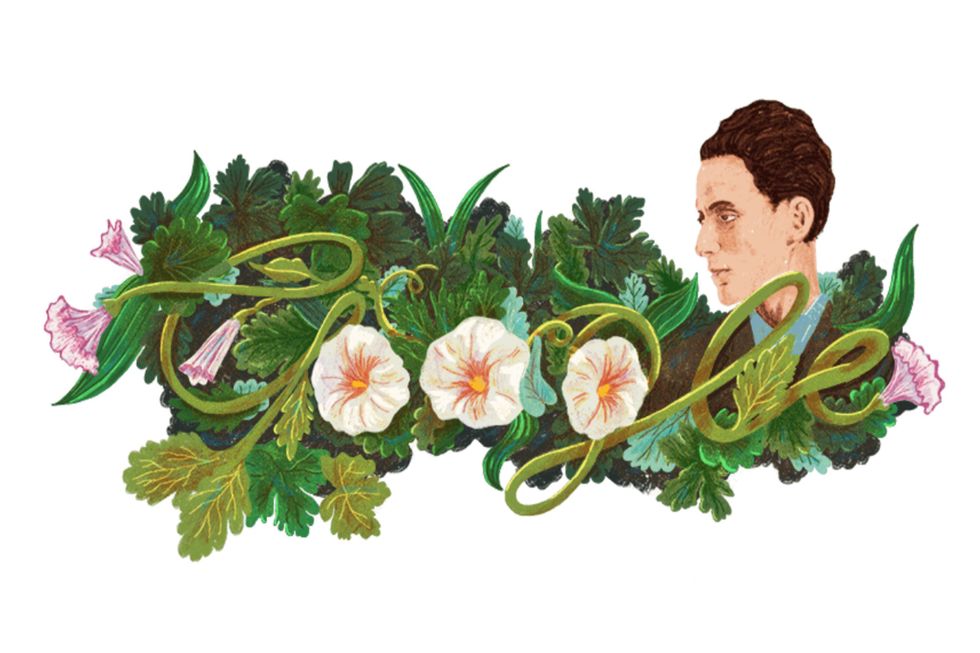News
Harriet Brewis
Aug 13, 2023

Gluck (right) was known for their naturalistic portraits, including 'Medallion' (left)
Wikimedia Commons/RA
Head to Google’s homepage today and you’ll see its primary-coloured logo transformed into an elaborate floral display, accompanied by an imposing, androgynous face.
This face belongs to the pioneering British artist known only as Gluck, who is celebrated both for their iconic portraits and picture frame designs, and for their bold rejection of gender norms.
Google has used its Doodle design to pay tribute to the trailblazing visionary on what would have been their 128th birthday.
So what do we know about Gluck? And why was their work so important?
Sign up for our free Indy100 weekly newsletter
Gluck was born Hannah Gluckstein in London on 13 August 1895 to a wealthy catering family. However, as they grew older, they rejected their full name – asking to be referred to simply as Gluck.
They attended the prestigious St. Paul’s Girls’ School in Hammersmith before moving on to St John's Wood School of Art.
During World War I, they moved to the village of Lamorna in Cornwall, which was known for its buzzing artists' community.
There, Gluck began to defy gender norms and fashions, donning men’s clothes and sporting barbered hair.

According to the Royal Academy of Art, they refused to identify with any artistic school or movement and so exhibited their work solely in “one-man shows”.
They also wrote on the backs of publicity photos: “Please return in good condition to Gluck, no prefix, suffix or quotes.”
And, as Google notes, when one art society identified Gluck as “Miss Gluck” on its letterhead, they immediately resigned.
Still, despite what would have been eyebrow-raising practices at the time, Gluck earned popularity among their peers and the wider public.
In 1932, Gluck designed and patented a three-tiered picture frame, which later became known as the Gluck frame. This traditionally matched the colour of the wall on which it hung, giving the illusion that the painting was part of the wall itself.

But perhaps their most famous work was a double-portrait of Gluck and their lover Nesta Obermer, called ‘Medallion’.
Gluck referred to the 1936 piece as the “YouWe” picture, which symbolised their spiritual, marital union with Obermer.
They later explained that, on 23 June 1936, the couple had attended a production of Mozart’s Don Giovanni at Glyndebourne.
Gluck felt that the intensity of the music fused them into one, inspiring the “YouWe” painting as a public declaration of love and commitment.
“Now it is out,” they subsequently wrote to Obermer, “and to the rest of the Universe I call Beware! Beware! We are not to be trifled with.”
'Medallion' is viewed as an iconic lesbian statement
Up until their relationship with Obermer, Gluck was better known for their still-lifes of flowers, which were inspired by arrangements created by their former lover, florist Constance Spry.
After this affair ended and their relationship with Obermer blossomed in its place, Gluck’s subjects and style evolved, with the focus shifting to their alliance, which they saw as a true meeting of souls.
In 1973, Gluck held their final exhibition, which debuted more than fifty paintings from across their career.
As Google points out in the blurb to its Google tribute, Gluck refused to compromise artistically and personally, and their legacy continues to inspire artists to express themselves freely today.
Have your say in our news democracy. Click the upvote icon at the top of the page to help raise this article through the indy100 rankings.
Top 100
The Conversation (0)













